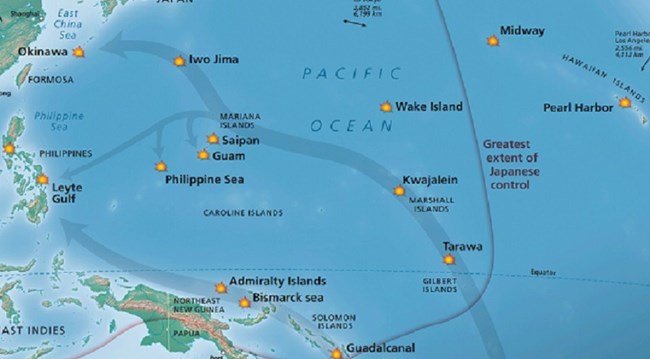Historic Places of Pearl HarborThe places that shaped Pearl Harbor are more than just points on a map—they are the locations where pivotal moments of World War II unfolded. From the decks of battleships to the airfields that were thrust into chaos, these sites bear witness to acts of heroism, sacrifice, and resilience. Each location at Pearl Harbor tells a unique story of that fateful day and its lasting impact on the world. Read more about these significant sites to connect with the history and bravery of those who lived through it. Click on the "Learn More" link for each section to explore stories behind these remarkable places. 
NPS photo. Pearl HarborLearn MorePearl Harbor, home to the iconic US Pacific Fleet, has often been described as "majestic," a marvel of the Pacific and one of its greatest harbors. Its strategic location and stunning beauty have made it a coveted port, long envied by nations that sought control. This sheltered, blue-green oasis holds deep scenic, historic, and strategic significance—significance that predates the tragic attack that thrust the United States into World War II. Long before the fateful morning of December 7, 1941, Pearl Harbor was already captivating with its dramatic landscapes and compelling history. 
Battlefield O'ahuLearn MoreJust before 8:00 a.m. on that infamous Sunday morning, December 7, 1941, the sailors aboard the naval vessels moored in Pearl Harbor were engaged in their usual routines, unaware that within minutes their lives—and the course of world history—would be irrevocably changed. Many were preparing for a peaceful day of shore leave, while others were getting ready for church services. On over 185 naval vessels scattered throughout the harbor, sailors stood by to raise the colors as part of their morning duties. 
Pacific BattlesLearn MoreThe human toll of the Pacific War was immense. The U.S. military suffered over 106,000 losses, while Japan lost more than 2.1 million soldiers, sailors, and airmen in the conflict. The staggering scale of death and destruction was felt on both sides, with entire units wiped out in brutal island battles and naval engagements across the Pacific. From 1937, when Japan began its occupation of China, to the war’s end in 1945, the suffering extended far beyond the battlefield. Over 20 million civilians in the Pacific and Southeast Asian theaters perished due to military attacks, massacres, disease, and starvation. The war’s devastation, compounded by food shortages and the breakdown of infrastructure, left a deep scar on the region's population. |
Last updated: September 25, 2024
